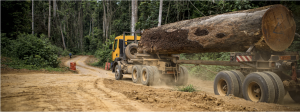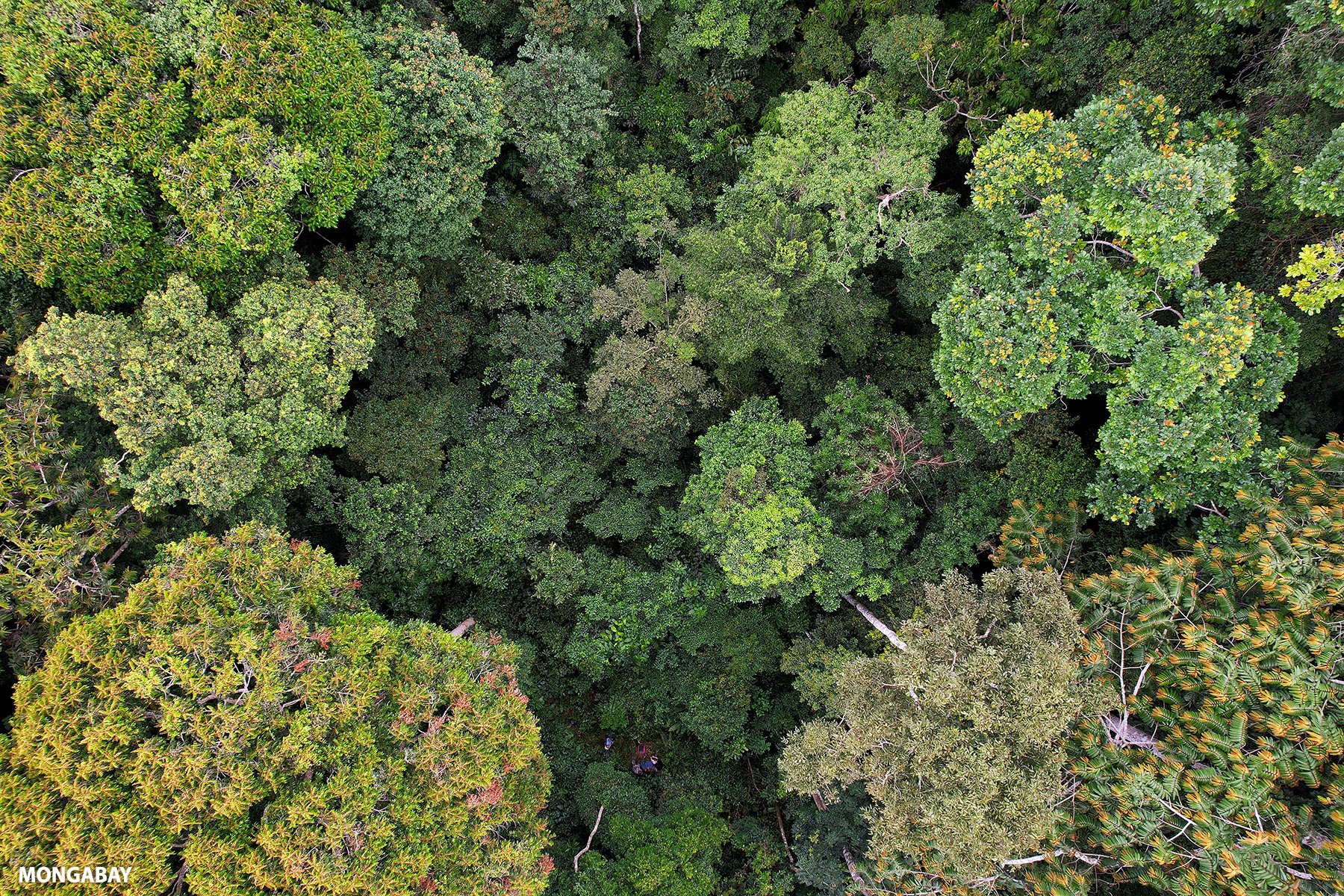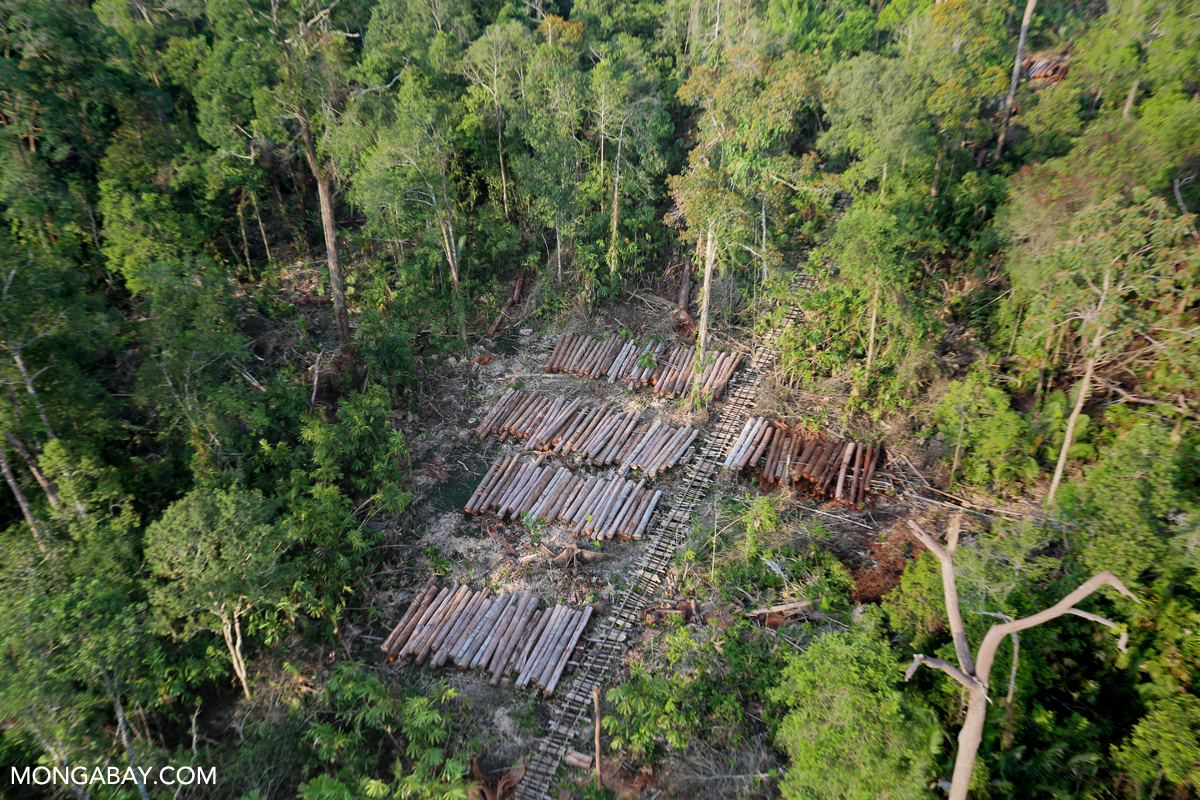Vietnam’s timber legality program not making a dent in risky wood imports
Despite new regulations to clean up Vietnam’s timber sector, importers continue to bring large volumes of tropical hardwood into the country from deforestation hotspots in Africa and Asia for use in products sold domestically, republished from Mongabay.com

Reposted from Mongabay.com, originally published on 2 February 2022. Photo by Mongabay.
- Despite new regulations to clean up Vietnam’s timber sector, importers continue to bring large volumes of tropical hardwood into the country from deforestation hotspots in Africa and Asia for use in products sold domestically.
- In 2018, Vietnam signed a Voluntary Partnership Agreement with the EU to eliminate illegal timber from the country’s supply chains and boost access to the strictly regulated European markets.
- However, importers say the new legality requirements introduced in 2020 to verify the legitimacy of timber brought into the country are “too confusing,” and customs data indicate few signs of a reduction in high-risk timber imports from countries including Cambodia, Cameroon, Gabon, Laos and Papua New Guinea.
- Although Vietnamese authorities are taking steps to improve the situation, meaningful change is expected to take time; a switch by domestic consumers to products that use sustainable, locally grown timber instead of imported tropical hardwoods could solve many underlying problems, experts say.
Vast quantities of tropical hardwood from deforestation hotspots around the world continue to enter Vietnam, in spite of new regulations to clean up supply chains. In 2018, the country signed a deal with the European Union to reform its timber sector and, in return, boost access to the strictly regulated EU markets. But recently introduced mechanisms to eliminate illegal timber are failing, experts say.
“Basically, nothing has changed,” Phuc Xuan To, a senior policy analyst at Forest Trends, told Mongabay. “The authorities allow the importing companies to bring in high-risk timber … just as they did before.”
Thousands of enterprises import 5 million to 6 million cubic meters (177 million to 212 million cubic feet) of timber into Vietnam from more than 100 countries every year. At least one-third of this is tropical hardwood from locations such as Cambodia, Laos, Papua New Guinea and around 20 countries in Africa. The majority of these tropical imports are considered “high-risk” in terms of the legality of their source.
Given the range of sources and actors, “implementation to meet [the new EU-Vietnam legislative] requirements was always going to be a challenge,” Phuc said.

The Vietnam-EU deal is a Voluntary Partnership Agreement under the EU’s Forest Law Enforcement, Governance and Trade (FLEGT) Action Plan. It represents a commitment to work together to clean up Vietnam’s domestic timber market to ensure its exports comply with EU timber regulations. When fully implemented, all Vietnamese timber exports to the EU will be issued certificates that assure legality of origin and production.
Following the signing of the agreement in 2018, legality requirements were incorporated into domestic legislation in October 2020 via the Vietnam Timber Legality Assurance System (VNTLAS). This framework applies to both export and domestic supply chains, essentially entailing that all timber imported into the country is clean.
Distant timber meets domestic demand
Most imported high-risk tropical timber is destined for Vietnam’s domestic market, according to Phuc, where demand for luxury hardwood furniture is high. Locally sourced wood used to suffice, but Vietnam’s 2016 blanket ban on domestic logging of natural forests forced manufacturers to look elsewhere. At the same time, significant supplies from neighboring Cambodia and Laos dwindled due to increased efforts in those countries to curtail exports of unprocessed timber.
To plug the supply gap, roughly 1.3 million m3 (46 million ft3) of timber enters Vietnam annually from more than 20 African countries, according to Forest Trends. Vietnam is now the second-largest importer of African timber in the world, behind China.
Cameroon is the principal supplier, providing roughly 60% of Vietnam’s tropical timber imports. Other major sources include Angola, the Democratic Republic of Congo, Gabon, Nigeria and Suriname, each of which exports more than 10,000 m3 (353,000 ft3) of logs and sawn wood to Vietnam each year.
Customs data compiled by Forest Trends indicate no signs of a reduction in high-risk timber imports since the VNTLAS regulations came into effect. Between January and October 2021, more than 400,000 m3 (14 million ft3) of wood entered Vietnam from Cameroon — around two-thirds of the total imported during the whole of 2020. Furthermore, the volume of timber from Laos and Cambodia during the same period had already exceeded figures for the whole of 2020.
Maintaining such imports “will continue to bring bad reputations to the Vietnamese timber industry, and could have unpredictable consequences for the timber industry,” says a recent Forest Trends report.

Complex framework obscures mitigation
The persist import of high-risk timber can be mostly attributed to poor implementation of new “due diligence” requirements. Under the new VNTLAS rules, Vietnamese importers must perform additional control measures when they deal with high-risk timber, such as compiling documentation that clearly proves the legality of the wood. But regulations in many supply countries are opaque and the necessary documents are challenging to procure and verify.
Importers say the due diligence process is “too complicated,” and they don’t know which authorities in supply countries issue the necessary paperwork, according to Phuc. In some cases, timber brokers in supply countries refuse outright to share information pertaining to harvest permits and concession permits because they are considered confidential.
“If you don’t know what the legality framework is in the source countries, then how can you know whether the import is legal?” Phuc said. “And if you are heavily relying on paper documents, how can you guarantee the legality? Paper can be bought.”
Phuc said further issues arise when importers buy wood from Chinese companies operating and liaising with harvesting, processing and transportation firms in many African supply countries. “The Vietnamese importers outsource that type of paperwork to the Chinese companies, who pass documents on, but they are not sufficient for the Vietnamese authorities or the VNTLAS requirements.”
Chinese timber companies operating in Africa have a murky track record. A 2019 investigation led by the Environmental Investigation Agency (EIA) uncovered claims of concessions obtained through bribery, along with allegations of tax evasion and overharvesting of trees in the Republic of Congo and Gabon. Meanwhile, Chinese traders in Cameroon reportedly incentivize the harvesting of African zebrawood (Microberlinia bisulcata), a hardwood species listed as critically endangered by the IUCN.
Reliance on paper documents and third parties to verify timber legality leaves room for malpractice: “[Importers] have to have additional mechanisms to make sure that the documents given to [them] are authentic,” Phuc said. “What is needed here is much more than documents.”
A 2021 Forest Trends report urges the Vietnamese government to do more to open bilateral dialogue with authorities in supply countries to find better ways to cooperate on timber legality issues.

Exporters exasperated by slow progress
The slow implementation of the VNTLAS controls has frustrated companies engaged in Vietnam’s lucrative export markets, according to Phuc. The relentless influx of high-risk timber for domestic products could jeopardize trade with not only the EU, but also the U.S., a market worth more than $7 billion in 2020.
Exporters were threatened with tariffs in October 2020, when the Office of the U.S. Trade Representative investigated allegations that illegally harvested or endangered timber was being imported into Vietnam in violation of its own laws, those of the source country and CITES regulations.
Although ultimately no tariffs were imposed, the investigation resulted in an agreement on illegal logging and timber trade between the U.S. and Vietnam in which the Vietnamese government committed to strengthening the VNTLAS and developing memorandums of understanding with high-risk timber-producing countries.
Consequently, in November 2021, Vietnam’s Ministry of Agriculture and Rural Development proposed MOUs with Cameroon, Laos and several other timber supply countries. Given that several of these countries already have Voluntary Partnership Agreements with the EU to address illegal logging, experts are hopeful they will be receptive to cooperation.
“Strengthening bilateral dialogue with Vietnam’s major supplying countries, and with Vietnamese importers, will be critical in allowing the government to make timely adjustments in policy implementation and improvements of its effectiveness,” the Forest Trends report says.

Progress to improve the system underway
Notwithstanding the current shortcomings, measures to improve the situation are underway. Vietnamese authorities, in cooperation with EU partners, are taking steps to review, clarify and reinforce the VNTLAS related legislation, including the regulations on imported timber, according to Bruno Cammaert, forestry officer at FAO’s regional office for Asia-Pacific and regional coordinator for the FAO-EU FLEGT Programme.
“During 2022 the Vietnam Administration of Forestry plans to evaluate implementation of VNTLAS Decree No 102 and other VNTLAS related legislation so far, which will likely lead to some adjustments to strengthen the Decree,” Cammaert told Mongabay in an email. He added that guidance on import controls has been developed in consultation with Vietnam’s customs and forest protection agencies and training programs are being rolled out nationally.
“A recent report found that in 2020 there were 4,500 enterprises and 1,690 other types of organizations and individuals involved in importing timber and timber products [into Vietnam],” Cammaert said. “It will obviously take some time and effort to build awareness, capacity and compliance amongst all these importers, as well as build the capacity of the large number of Customs Officers and Forest Rangers [but these] combined efforts should have a positive impact on the reinforcement of import related controls and due diligence in the coming period.”

Toward FLEGT licensing
The objective of the EU-Vietnam Voluntary Partnership Agreement is to introduce a licensing system, whereby Vietnam can issue EU FLEGT licenses to accompany verified legal timber exports into the EU. While there is still a long way to go until Vietnam’s timber legality assurance system fully complies with EU requirements, lessons can be learned from other countries’ experiences.
Of 15 countries that currently have VPAs with the EU, Indonesia is the only country to currently operate a FLEGT licensing system. Since the country signed a VPA in 2013 and began FLEGT licensing in 2016, annual deforestation rates have dropped by 56%. Nonetheless, “there are still many weaknesses” with the system, Deden Pramudiana, a campaigner for the Indonesian Independent Forest Monitoring Network (JPIK), told Mongabay.
Independent monitoring by JPIK in cooperation with Indigenous peoples and local communities in 2020 and 2021 uncovered multiple violations of Indonesia’s timber legality system. Many of the breaches echo those encountered in the nascent Vietnamese system. Violations ranged from logging companies cutting down trees outside their concessions, to woodworking shops manipulating delivery records to obscure timber origins, and exporters selling forged certificates.
Furthermore, critics of VPA implementation in Indonesia say strict enforcement of regulations disproportionately impacts micro, small and medium-size enterprises (MSMEs) that lack the financial resources to adapt to new international standards. “In Indonesia, the businesses benefiting from FLEGT licensed timber are mainly large-scale,” Phuc said. “The small, medium and micro operators are not benefiting.”

Domestic focus could resolve many issues
To avoid similar outcomes in Vietnam, experts say the government should focus on building the capacity of MSMEs and domestic plantations, most of which are operated by smallholders. Vietnam produces more than 20 million m3 (706 million ft3) of plantation wood annually, but it is rarely used for furniture because plantation timber, such as acacia, is deemed inferior to hardwoods. Consequently, the majority is exported as woodchip.
According to Phuc, many problems that underly Vietnam’s timber sector could be solved simultaneously if domestic consumers would switch to products that use sustainable, locally grown timber instead of imported tropical hardwoods.
Such a consumer shift would boost opportunities for smallholder plantation growers and reduce transport-related delays and costs, thereby improving the resilience of domestic supply chains. It would also lower the risk of sanctions in lucrative export markets. And, crucially, it would mean Vietnam would no longer risk contributing to deforestation in other countries.
“Some say that it would incentivize clearing natural forest to grow plantation timber, but domestic policy and implementation can be there to make sure that doesn’t happen,” Phuc said. On the other hand, “if you continue to allow tropical high-risk timber imports as an alternative, then you are a source of deforestation to another country.”
Please see our Reprint Guidelines for details on republishing our articles.

